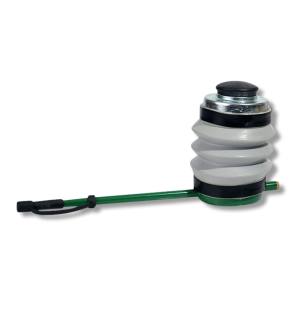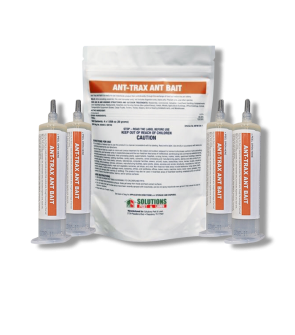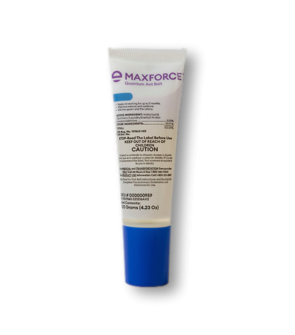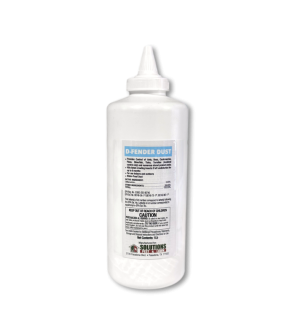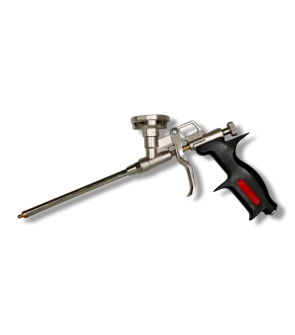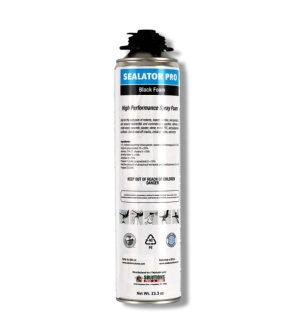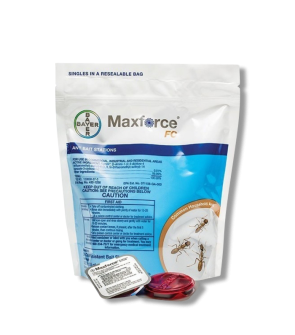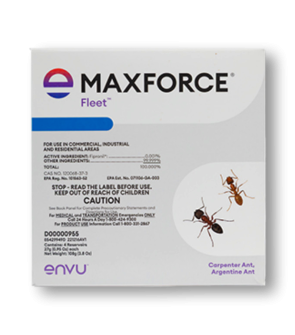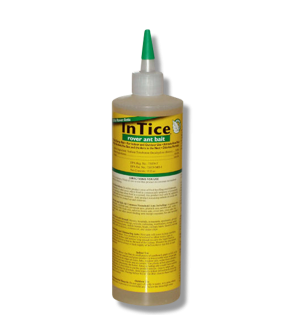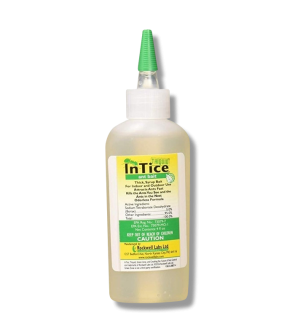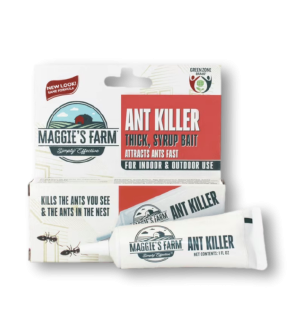Gain access to personalized product screening, the best pricing, rewards, and more!
Most Effective Products
Acrobat Ant Control: How To Get Rid of Acrobat Ants
This page is an acrobat ant control guide. Using the products and methods suggested, you will get control of acrobat ants. Follow this guide and use the recommended products; we guarantee 100% control of acrobat ants.
Of the many ant species you can encounter around your home, one that is becoming more common is the acrobat ant, also called cocktail ants or Valentine ants. This outdoor-nesting arboreal ant is unique because it can live in various conditions, making it difficult to control.
Acrobat ants get their name by raising their abdomen over their head and thorax when moving like tiny acrobats. Acrobat ants share some similarities to carpenter Ants in that they like to form nests in damp, rotting wood.
If your home has become infested with acrobat ants, Solutions Pest and Lawn can equip you with professional-grade products and knowledge to eliminate the infestation yourself. Our DIY guide below offers the best-recommended products for acrobat ant control and the best strategy to tackle these nuisances.
Identification
Before proceeding with pesticide treatment, you need to identify and ensure you're dealing with acrobat ants. Misidentification can lead you to use the wrong treatment products and waste time and money. Below are some characteristics of acrobat ants to aid in identification:
- Acrobat ants are among the smaller ants with the workers measuring between 2.6 to 3.2 mm in length. They can vary in color from yellowish brown, reddish brown, and black. When threatened, an acrobat ant will arch and raise its abdomen, resembling a scorpion tail.
- When viewed from above, their abdomen will resemble the shape of a heart. In many species, the abdomen is darker than the rest of the body, but the entire body can also be one solid color in other species.
- Acrobat ants have two nodes in their pedicel that attach to the top of their abdomen. They also have 12 segmented antennae and a 3-segmented club.
Use the description and image above to help you determine whether you are encountering acrobat ants. If you are unsure, contact us, and we will try to help you correctly identify the pest.
Inspection
Once you have correctly identified acrobat ants, inspect where they are infesting, harboring, or where they have been seen. During the inspection, you will search for these "hot spots" where acrobat ants are found.
Where To Inspect
Acrobat ants are commonly found outdoors, nesting in damp, rotting, or dead wood.
Outdoors, they can be found in trees, fallen branches, logs, stumps, woodpiles, and other debris.
These ants can easily invade homes by traveling through pipes, cracks, windows, and doors. They can also gain roof access through any overhanging tree branches.
When infesting indoors, they can build nests in the door or window frames of bathrooms, kitchens, attics, and basements. They can also create nests in wood or damp spaces, such as house voids, walls, voids around door and window frames, insulation, baseboards, and other damp spaces.
What To Look For
When inspecting for acrobat ants, note where you’ve seen ant trails and foraging activity. Outdoors acrobat ants will eat insects and honeydew from scales or aphids. Indoors, they’ll look for meats or sugary foods.
Also, if you have seen frass, note ant droppings. This clearly indicates their nesting in damp or rotting wood, as they create their nests by tunneling into the wood structure. If scale insects are on your property, the acrobat ants may build a round carton structure around them. Like odorous house ants, acrobat ants release a foul odor when the colony is disturbed.
Treatment
Once you have confirmed acrobat ant activity, it is time to begin treatment. Remember to read all product labels, follow the application instructions on these labels, and stay safe by wearing the proper personal protective equipment (PPE).
To treat acrobat ants, we recommend treating both indoors and outdoors using Supreme IT Insecticide, Fence Dust, and Ant-Trax Ant Bait.
If you have an acrobat ant infestation indoors, start with an application of Ant-Trax Ant Bait.
If you are only facing an outdoor infestation, do not perform any baiting indoors. Baiting indoors may attract more pests where control isn't necessary.
Step 1: Apply Ant-Trax Ant Bait Indoors
Ant-Trax Ant Bait is a bait gel made with imidacloprid. This product mimics foraged food and contains attractants, encouraging ants to spread the product throughout their nests.
To apply Ant-Trax Ant Bait, simply press down on the plunger.
Apply 0.066 oz. of Ant-Trax Ant Bait per 100 sq. ft. or 0.006 oz. of product per square yard to control acrobat ants.
Apply the bait as rounded pea-sized drops on countertops, near window frames, in cracks and crevices, and near baseboards where you have seen acrobat ant activity. You will also set bait near where you have seen ants emerge from their nests.
These bait placements should be in locations that are out of reach of children and pets.
Space placements 1 foot apart and allow 7 to 10 days for the ants to consume the material and die out.
Step 2: Outdoor Treatment with Supreme IT
After indoor ant activity has stopped, or if your infestation is strictly outdoors, apply a perimeter application around your structure with Supreme IT.
Supreme IT is a bifenthrin-based liquid suspended concentrate that is labeled to treat over 70 different pests. When applied, Supreme IT will leave a residual chemical barrier that will control pests for up to 90 days after application. This product will need to be mixed with water.
For residential treatments, you can mix and apply your Supreme IT in a handheld pump sprayer or a backpack sprayer.
Determine how much Supreme IT you will need to apply by measuring the square footage of the treatment area. To do this, measure the treatment area's length and width in feet, then multiply them together (length x width = square footage).
To treat acrobat ants outdoors, mix 1.0 fl. oz. of Supreme IT with 1 gallon of water per 1,000 sq. ft.
Perform a spot treatment of areas where you have seen ant activity, such as any visible ant nests, on pavement, sidewalks, driveways, patios, and landscape beds.
Perform spot treatments of areas where you’ve seen ant activity. This includes visible ant nests on pavement, in patios, and in landscape beds.
Next, a perimeter application is conducted by spraying entry points like doors, windows, and other voids that ants can use to invade. Then, spray your structure’s outer perimeter 3 feet up the foundation and, at most, 10 feet out. Ants and insects that serve as their food sources will die in several hours after being exposed to Supreme IT or its residual effect.
Keep people and pets away from treated areas until the spray has completely dried.
Step 3: Treat Voids and Points of Entry With D-Fender Dust
After applying with Supreme IT, add another layer of defense with D-Fender Dust. D-Fender Dust is a dry, moisture-resistant insecticidal dust made with deltamethrin. Once applied, this product will last for 8 months after application.
To use D-Fender Dust, you will need a handheld duster.
The amount of dust to be applied will vary with the site but should usually be in the range of 1 oz. per 125 sq. ft. or 0.5 lbs. per 1000 square feet.
Apply the product by first filling up the duster with the proper amount of D-Fender Dust. Leave half the duster container empty to allow air to circulate inside.
Apply dust underneath sinks where the plumbing penetrates the wall, along baseboards, and in other cracks or crevices where you have seen ant activity. Ants and other invasive insects that come in contact with or ingest the dust will have their nervous systems impacted and will die shortly.
Keep out of reach of children and pets.
Prevention
No treatment plan is finished until environmental modifications make it less suitable for acrobat ants. Here are some preventative measures we suggest to ensure acrobat ants don't make a return:
- Ants invade homes in search of food, water, and shelter, so clean up in and around your home to remove these. Indoors, seal loose foods like cereal, flour, and pet food in airtight containers. Regularly take out the trash, wipe down surfaces, sweep or vacuum the floors, and dry the kitchen and bathroom sinks. Outdoors, rake away leaves and remove plant debris, trim away overgrown shrubbery and branches, and mow your lawn regularly to the grass’s preferred mowing height.
- We also recommend you apply exclusion methods to block off potential pest entry points. Small openings can be stuffed with Stuffit Copper Mesh, while tighter cracks and crevices should be sealed with an expanding foam like Sealator Pro.
- Finally, keep up with preventive applications of your pesticide products. One application of Supreme IT will last for up to 90 days, so we recommend quarterly applications to maintain protection year-round. D-Fender Dust will last for up to 8 months when undisturbed in a dry location, so re-apply when necessary to maintain control.
Key Takeaways
What are Acrobat Ants?
- Acrobat ants are household intruders that are becoming a rising issue. They are known for contorting their abdomens over their heads like acrobats.
How To Get Rid of Acrobat Ants
- To control acrobat ants, we recommend combining Supreme IT (around your home perimeter), D-Fender Dust (around voids and points of entry), and Ant-Trax Ant Bait indoors.
Preventing Acrobat Ant Reinfestation
- Discourage acrobat ants by addressing moisture problems, caulking off cracks and crevices to seal entry points and applying preventative treatments of Supreme IT.














